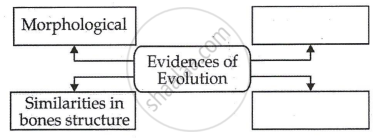Advertisements
Advertisements
प्रश्न
Explain divergent evolution in detail. What is the driving force behind it?
उत्तर
Whales, bats, Cheetah and human (all mammals) share similarities in the pattern of bones of forelimbs. Though these forelimbs perform different functions in these animals, they have similar anatomical structure. All of them have humerus, radius, ulna, carpals, metacarpals and phalanges in their forelimbs.
Hence, in these animals, the same structure developed along different directions due to adaptations to different needs. This is divergent evolution and these structures are homologous. Homology indicates common ancestry. Driving force behind the divergent evolution is adaptation in different environments.
APPEARS IN
संबंधित प्रश्न
One pair of organs in the following animals are not homologous. This is :
(a) forelimbs in humans and lizard
(b) forelimbs in lizard and frog
(c) wings in butterfly and bat
(d) wings in bat and bird
_______ is a connecting link between Annelida and Arthropoda.
Complete the following chart:

Very short answer question.
What are homologous organs?
_____________ is a vestigial organ in human beings.
I am a connecting link between reptiles and mammals. Who am I?
What is carbon dating?
What are we referring to? When we say 'simple organisms' or 'complex organisms'.
Define the term:
Homologous organs
Complete the following conceptual picture:

